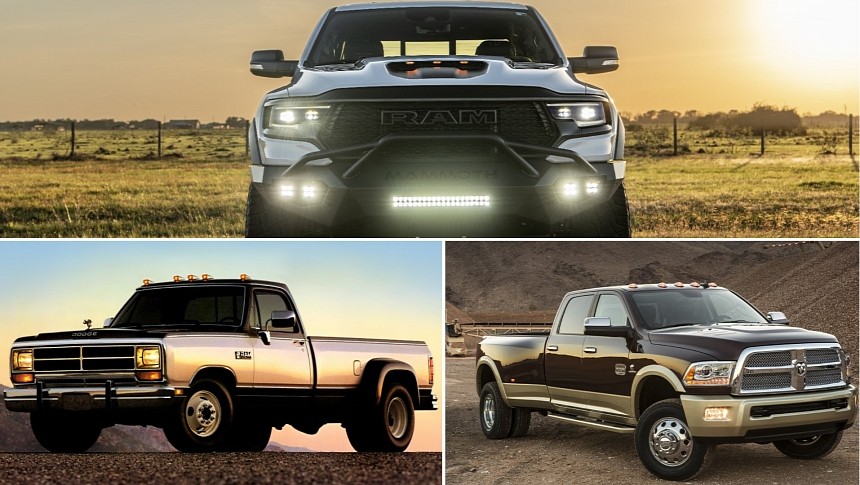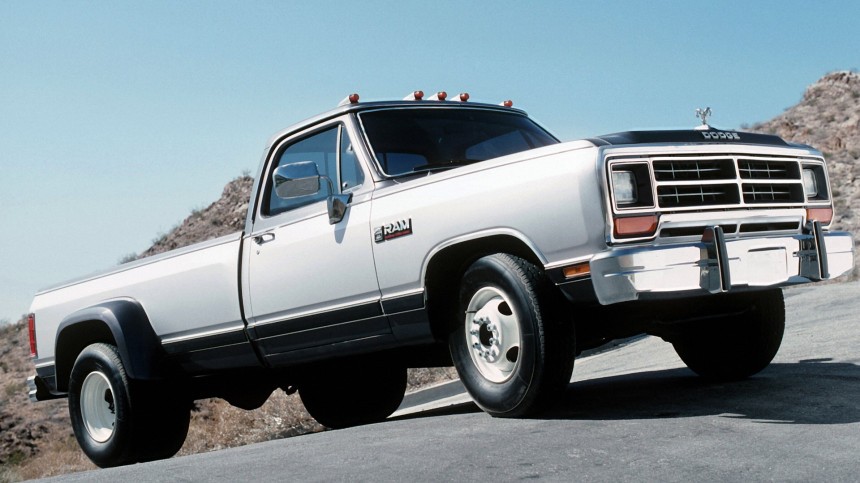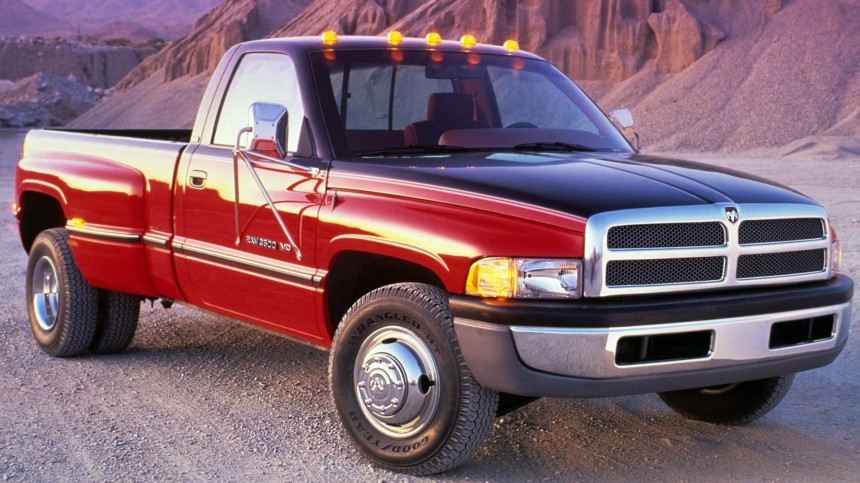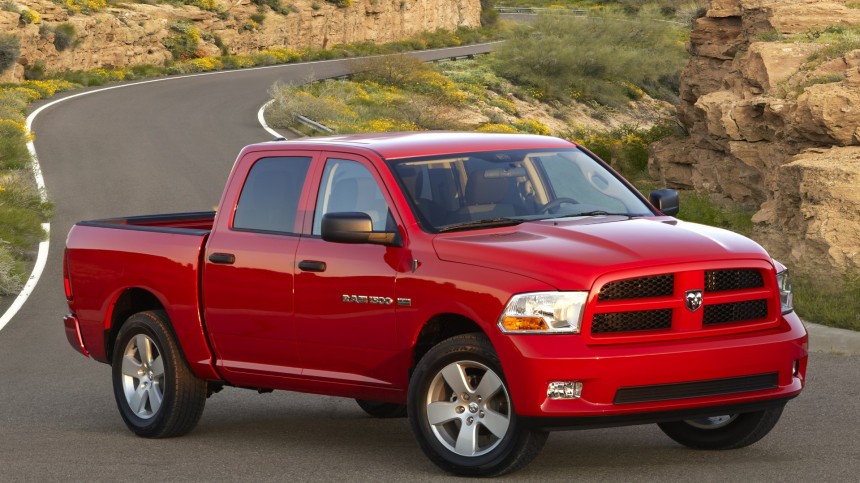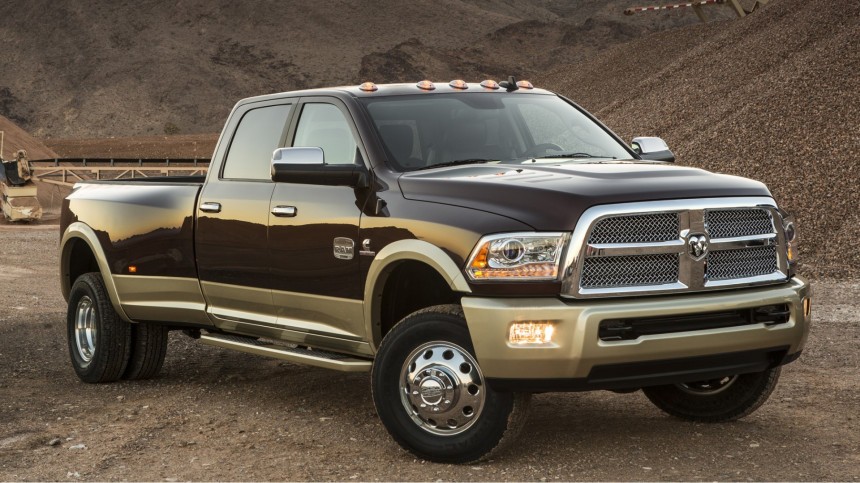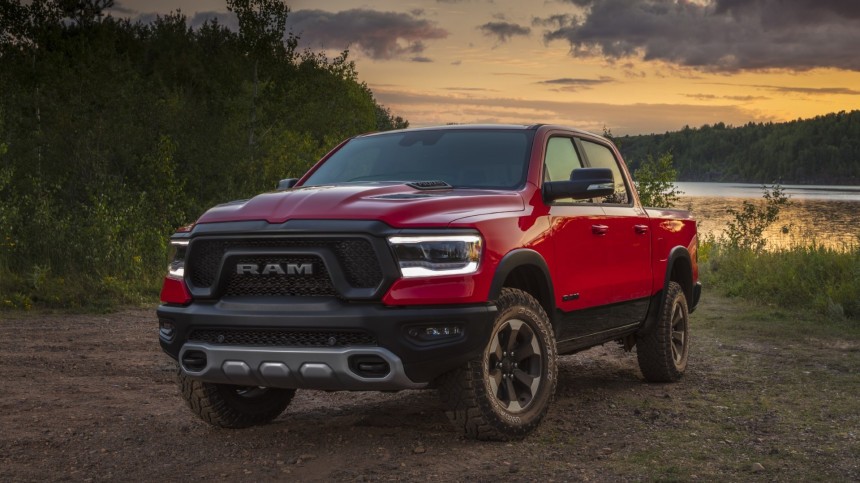What started as a rambunctious yet reliable pickup model ended up having big ramifications for the light truck market. Yes, the history of the Dodge Ram is filled with challenges and changes, from parting ways with a known nameplate to separating itself from the very company that made it. Like its Mopar roots, the Ram 1500's origins tell a tale about doing things that might just be crazy enough to work.
If going up against automotive giants as a smaller start-up sounds ludicrous to the average company, for American automaker Dodge, that sounds perfectly normal. In the 60s, Ford and General Motors were vying for the top spot in the light truck department. Ford's F-series and Chevrolet's C/K pickup trucks were the most popular choices for decades.
Meanwhile, Dodge's answer to the competition was releasing a Mopar truck legend in '61 – the D/W Series pickup truck model. These pickups left their mark among consumers and in pop culture, becoming an icon in the truck scene not because of their comfort features and refinement. Like past B and C-Series trucks, the D-Series showcases its lineup's trademark toughness and dependability. Dodge often utilized hood ornaments depicting a charging ram in its pickup truck models long before Dodge Ram history was made.
That's because the automaker markets its trucks as hardy vehicles capable of withstanding harsh road conditions, the elements, and even the test of time; the D-Series is no different. Despite being pretty basic utility vehicles, D-Series pickups stood out from the competition by being as powerful as they were gritty. In fact, the first muscle truck in the world traces its roots back to this nameplate. D-100 pickups used almost every engine in Chrysler's inventory, from 2.8-liter slant-sixes to 7-liter V8s. With over 360 horses under the hood, the D-100s were basically the most powerful pickup trucks of their time. Dodge continued selling these popular models for more than 30 years, but in 1981, the aging nameplate transformed into something else, giving birth to the Dodge Ram's origin story.
By the end of the D-Series' life cycle, the company rebadged these trucks into Dodge Rams while continuing to sell its final generation line. The result is the first and last Dodge Ram to retain its ram hood ornament – a fleeting reminder of its ancestors. While its bare-bones interior might be light on comfort, the original Dodge Ram made up for that in sheer power. First-generation Ram engines included Chrysler's 3.6-liter I6s and 5.9-liter V8s. The most popular choice was a Cummins turbo-diesel engine, commonly used in heavy trucks like big rigs and school buses.
First-generation Dodge Rams had as much as 200 horsepower from the factory, but power isn't the only ace up its sleeve. Torque is good for hauling serious weight, and its optional diesel engines have plenty: 400 lb-ft. Having the heart of full-sized trucks allows the original Dodge Ram to pull about 11,000 lbs. Putting function and utility over comfort and amenities made the pickup truck model a popular choice among drivers looking to use them as their primary source of income. Dodge sold the first Ram pickup trucks alongside its D/W predecessor for over three decades before ending production in 1993. Of course, this was only the beginning of this truck's rampaging streak.
The next chapter of the Dodge Ram's origins is when things started to, well, ramp up. If the original Dodge Ram pickup still resembled its predecessor a lot, its second iteration marked a significant departure from its archaic aesthetics. First introduced as a 1994 model year, the second-generation Ram had a less boxy and more rounded, sleek looks. It was also the first Dodge Ram to debut a prominent cross-hair grill design. Under the hood is where this truck shines, especially since it came at a time when Chrysler still owned Lamborghini. Aside from Chrysler's Magnum V6s and V8s, the new Dodge Ram engine choices also included the Viper-like 8-liter V10s, not to mention the return of Cummins' acclaimed turbo-diesel straight-six engines.
Such potent power plants increased the truck's output from 240 horsepower to a whopping 300. These upgraded Dodge Ram specs make the trucks capable of hauling up to 13,000 lbs., even boasting the highest payload capacity out of its competitors at over 5,200 lbs. Other than performance, the second-gen Rams also made strides in increasing comfort by expanding its interior space.
Amenities include pop-up cupholders, ample interior storage, a massive center compartment, spacious six-passenger seating, and backlit switches. With the second-generation winning Truck of the Year awards, the question now is, how can the next Dodge Ram 1500 specs possibly get any better?
After the third-generation Ram 1500 arrived in 2002, it was evident that Dodge's answer to improving its famous nameplate was to go even bigger. Sporting a menacingly enlarged cross-hair grille, sharper lines, and wider fender, this successor is the meanest, most powerful Dodge Ram yet. Being bigger should also mean getting better, and the Dodge Ram's engine options didn't disappoint.
From the usual Magnum V6s and Cummins turbo-diesel power plants to the enormous Hemi V8, there's enough muscle to go around with these trucks. The SRT-10 Dodge Ram variant even placed the second-gen Viper's venomous V10 under its hood, pushing this utility truck's power output to supercar territory at 500 horsepower.
Despite being a rugged hauling machine, the third-generation Ram interior is as refined as a modern sedan. Features like keyless entry, heated seats, satellite navigation system, reading lights, Bluetooth wireless, powered sunroof, and even a rear DVD player are all available here. Conventional front-hinged rear doors replaced the previous model's inverted coach-style doors, creating more legroom for passengers in the back. Production of the third-generation Ram ended with its 2009 model. While its run might feel short-lived when compared to its predecessor, it paved the way for a crucial transition period in the Dodge Ram's history.
For the 2009 model, Dodge pushed the iconic nameplate's design further with a revamped cross-hair grille poking farther up front, creating a bolder-looking front fascia. Updated Pentastar and EcoDiesel V6s now make up the new Ram engine ensemble, alongside the ever-popular Hemi V8s and Cummins inline six-cylinders. Power-wise, the varying fourth-generation Ram specs outputted anywhere from 215 horsepower to 390 horsepower. After all, the fourth-gen came just as the country was recovering from the 2008 financial crisis, and gas prices were skyrocketing. So, instead of coming up with the most powerful Dodge Ram, the company focused on adding more refinements.
Among these upgrades was the new Rambox system, making it the first Dodge Ram to showcase a modular, adjustable, and expanding truck bed to accommodate varying payloads. Other new features included an improved infotainment system with dedicated hard-drive storage and an upgraded coil-spring suspension system.
In 2010, the Ram name became an independent brand, finally separating from Dodge. With big changes come better improvements, and later fourth-generation models did just that by adding an air suspension system and active grille shutters – a feature that automatically opens or closes the grille to improve cooling and aerodynamics. Unsurprisingly, the fourth iteration became one of the most popular Ram pickup models yet again, even winning more Truck of the Year awards.
Times were changing, and so were the new Ram 1500 specs. By 2019, the popular pickup model looked nothing like before, with the updated Ram 1500 exterior trading its iconic cross-hair grille design for a polarizing in-your-face emblem. However, this departure in form didn't mean leaving its core qualities. Carrying on from where the world's first muscle truck left off, the fifth-generation produced perhaps the most powerful Ram pickup truck ever in the form of its TRX variant. In utilizing a supercharged 6.2-liter Hemi V8 that produces a staggering 700-plus horsepower, this muscle truck evolved into a super-truck.
Heavy Duty variants can tow over 16,000 lbs., with a payload capacity topping at a little above 3,100 lbs. Staying true to its norm-defying reputation, the new Ram 1500 shook the competition by showcasing a massive EV-esque 12-inch touchscreen. Other new features include a heads-up display, digital rearview mirror, electronic trailer reverse steering, and adaptive cruise control.
This new breed of Ram trucks is still defying norms by incorporating improved safety, utility, and cutting-edge technology, all without forgetting its good ole' Diesel heritage. What used to be a dark horse overshadowed by Ford and GM's colossal stature is now a stalwart brand preferred by many over its rivals. Ram isn't just a pickup model anymore; it has evolved into a brand that is preparing to spark a Ram REV-olution.
Meanwhile, Dodge's answer to the competition was releasing a Mopar truck legend in '61 – the D/W Series pickup truck model. These pickups left their mark among consumers and in pop culture, becoming an icon in the truck scene not because of their comfort features and refinement. Like past B and C-Series trucks, the D-Series showcases its lineup's trademark toughness and dependability. Dodge often utilized hood ornaments depicting a charging ram in its pickup truck models long before Dodge Ram history was made.
That's because the automaker markets its trucks as hardy vehicles capable of withstanding harsh road conditions, the elements, and even the test of time; the D-Series is no different. Despite being pretty basic utility vehicles, D-Series pickups stood out from the competition by being as powerful as they were gritty. In fact, the first muscle truck in the world traces its roots back to this nameplate. D-100 pickups used almost every engine in Chrysler's inventory, from 2.8-liter slant-sixes to 7-liter V8s. With over 360 horses under the hood, the D-100s were basically the most powerful pickup trucks of their time. Dodge continued selling these popular models for more than 30 years, but in 1981, the aging nameplate transformed into something else, giving birth to the Dodge Ram's origin story.
First-generation Dodge Ram (1981)
First-generation Dodge Rams had as much as 200 horsepower from the factory, but power isn't the only ace up its sleeve. Torque is good for hauling serious weight, and its optional diesel engines have plenty: 400 lb-ft. Having the heart of full-sized trucks allows the original Dodge Ram to pull about 11,000 lbs. Putting function and utility over comfort and amenities made the pickup truck model a popular choice among drivers looking to use them as their primary source of income. Dodge sold the first Ram pickup trucks alongside its D/W predecessor for over three decades before ending production in 1993. Of course, this was only the beginning of this truck's rampaging streak.
Second-generation Dodge Ram (1994)
Such potent power plants increased the truck's output from 240 horsepower to a whopping 300. These upgraded Dodge Ram specs make the trucks capable of hauling up to 13,000 lbs., even boasting the highest payload capacity out of its competitors at over 5,200 lbs. Other than performance, the second-gen Rams also made strides in increasing comfort by expanding its interior space.
Amenities include pop-up cupholders, ample interior storage, a massive center compartment, spacious six-passenger seating, and backlit switches. With the second-generation winning Truck of the Year awards, the question now is, how can the next Dodge Ram 1500 specs possibly get any better?
Third-generation Dodge Ram (2002)
From the usual Magnum V6s and Cummins turbo-diesel power plants to the enormous Hemi V8, there's enough muscle to go around with these trucks. The SRT-10 Dodge Ram variant even placed the second-gen Viper's venomous V10 under its hood, pushing this utility truck's power output to supercar territory at 500 horsepower.
Despite being a rugged hauling machine, the third-generation Ram interior is as refined as a modern sedan. Features like keyless entry, heated seats, satellite navigation system, reading lights, Bluetooth wireless, powered sunroof, and even a rear DVD player are all available here. Conventional front-hinged rear doors replaced the previous model's inverted coach-style doors, creating more legroom for passengers in the back. Production of the third-generation Ram ended with its 2009 model. While its run might feel short-lived when compared to its predecessor, it paved the way for a crucial transition period in the Dodge Ram's history.
Fourth-generation Dodge Ram (2009)
Among these upgrades was the new Rambox system, making it the first Dodge Ram to showcase a modular, adjustable, and expanding truck bed to accommodate varying payloads. Other new features included an improved infotainment system with dedicated hard-drive storage and an upgraded coil-spring suspension system.
In 2010, the Ram name became an independent brand, finally separating from Dodge. With big changes come better improvements, and later fourth-generation models did just that by adding an air suspension system and active grille shutters – a feature that automatically opens or closes the grille to improve cooling and aerodynamics. Unsurprisingly, the fourth iteration became one of the most popular Ram pickup models yet again, even winning more Truck of the Year awards.
Fifth-generation Dodge Ram (2019)
Heavy Duty variants can tow over 16,000 lbs., with a payload capacity topping at a little above 3,100 lbs. Staying true to its norm-defying reputation, the new Ram 1500 shook the competition by showcasing a massive EV-esque 12-inch touchscreen. Other new features include a heads-up display, digital rearview mirror, electronic trailer reverse steering, and adaptive cruise control.
This new breed of Ram trucks is still defying norms by incorporating improved safety, utility, and cutting-edge technology, all without forgetting its good ole' Diesel heritage. What used to be a dark horse overshadowed by Ford and GM's colossal stature is now a stalwart brand preferred by many over its rivals. Ram isn't just a pickup model anymore; it has evolved into a brand that is preparing to spark a Ram REV-olution.
